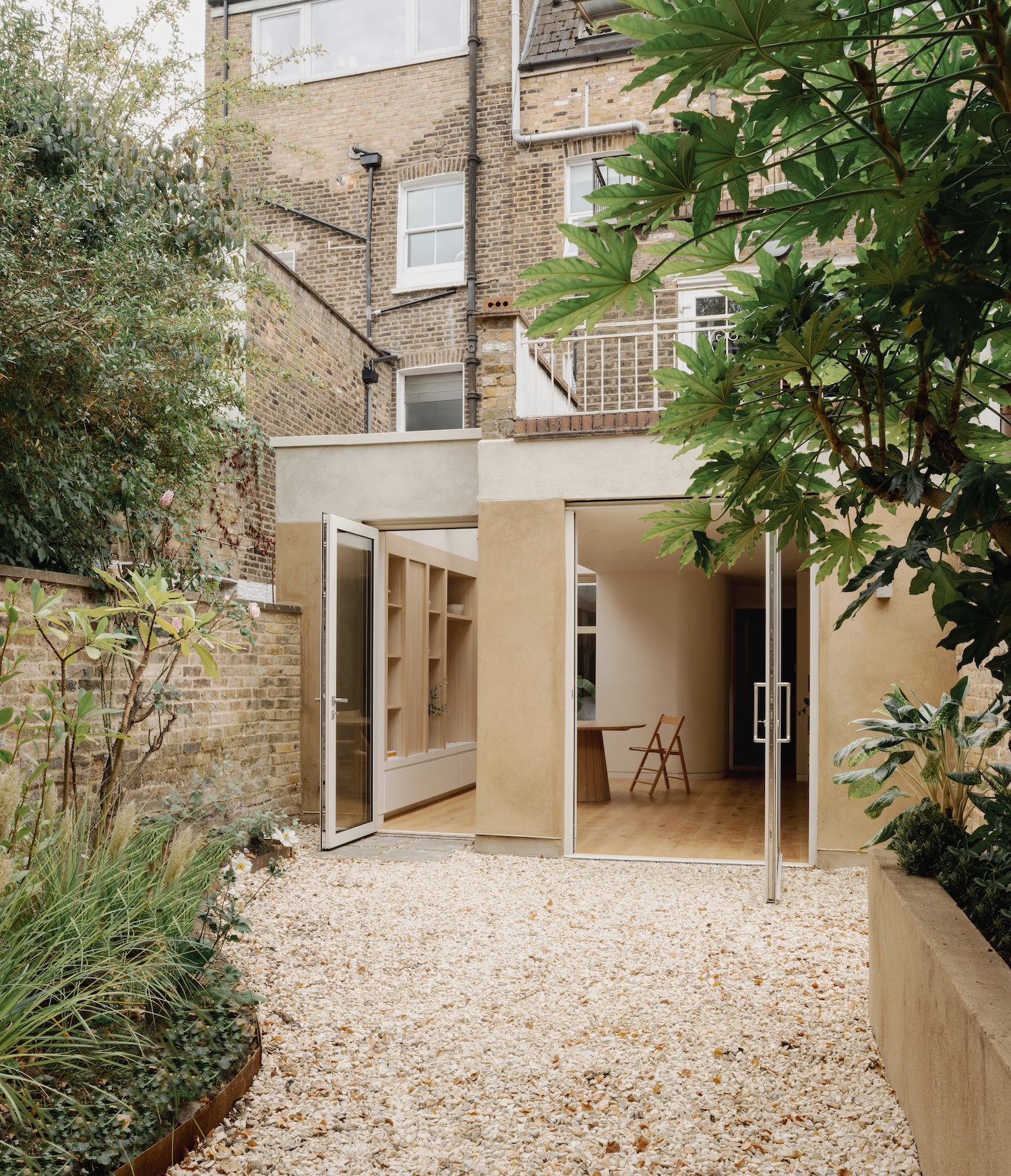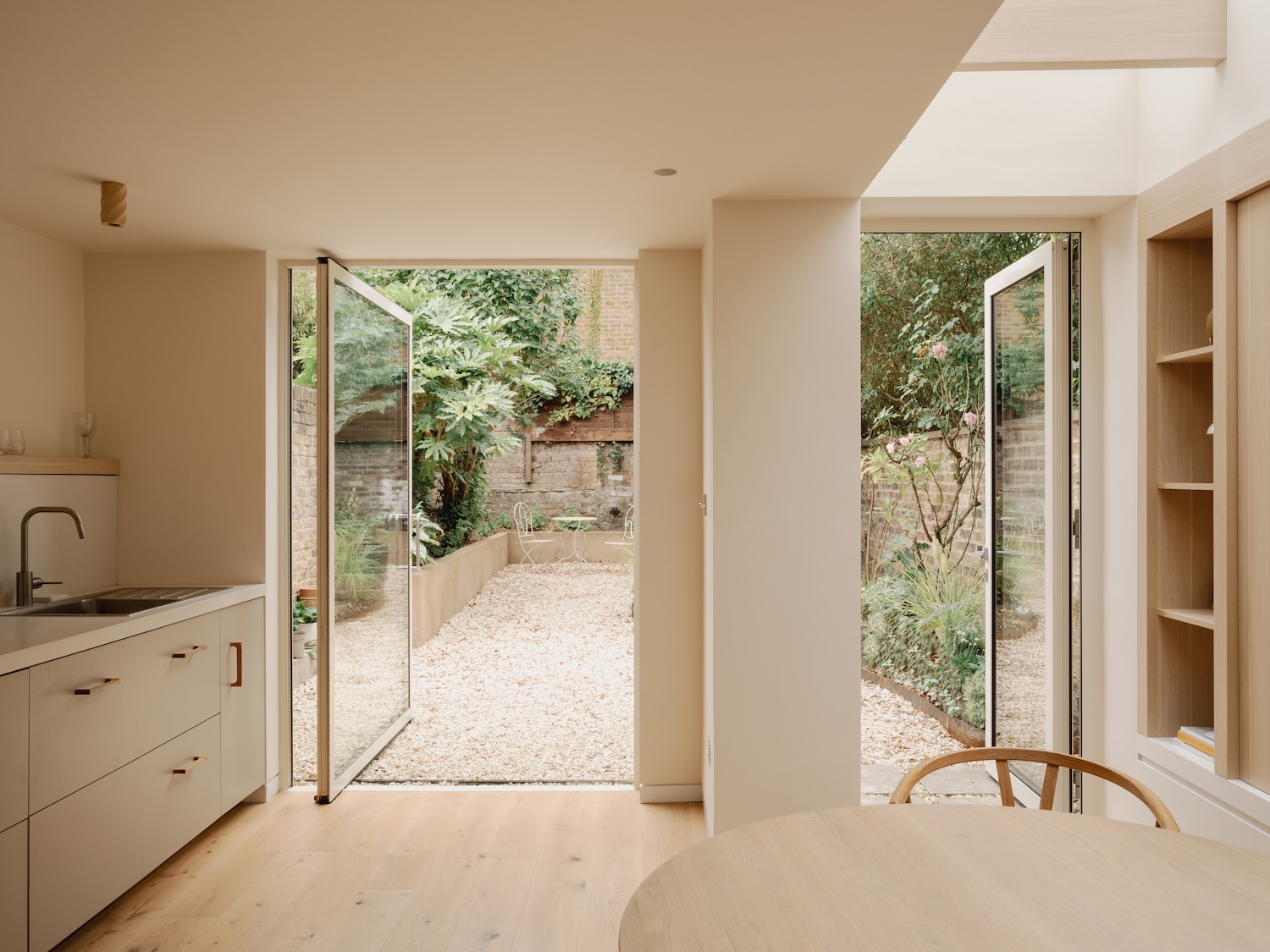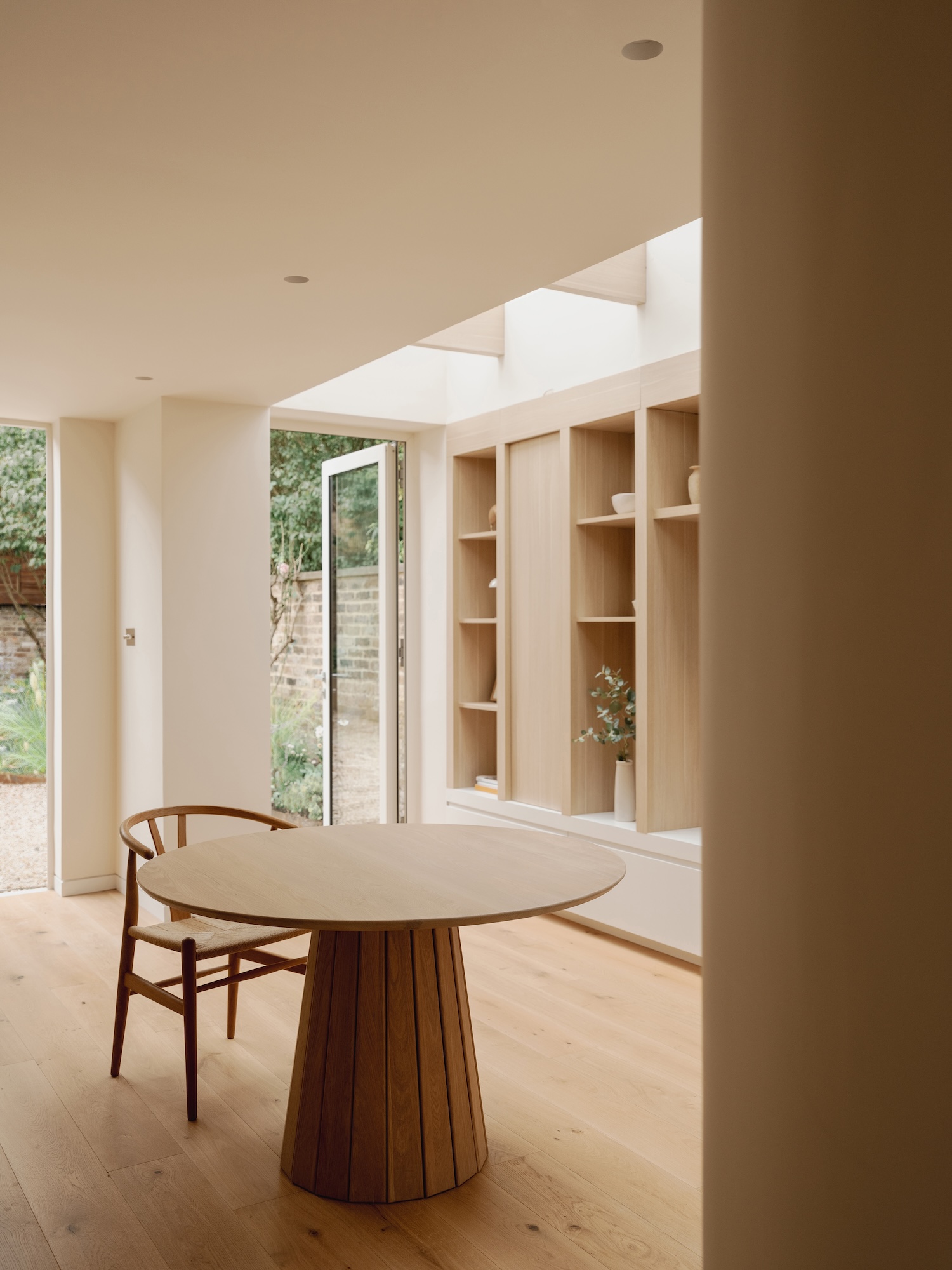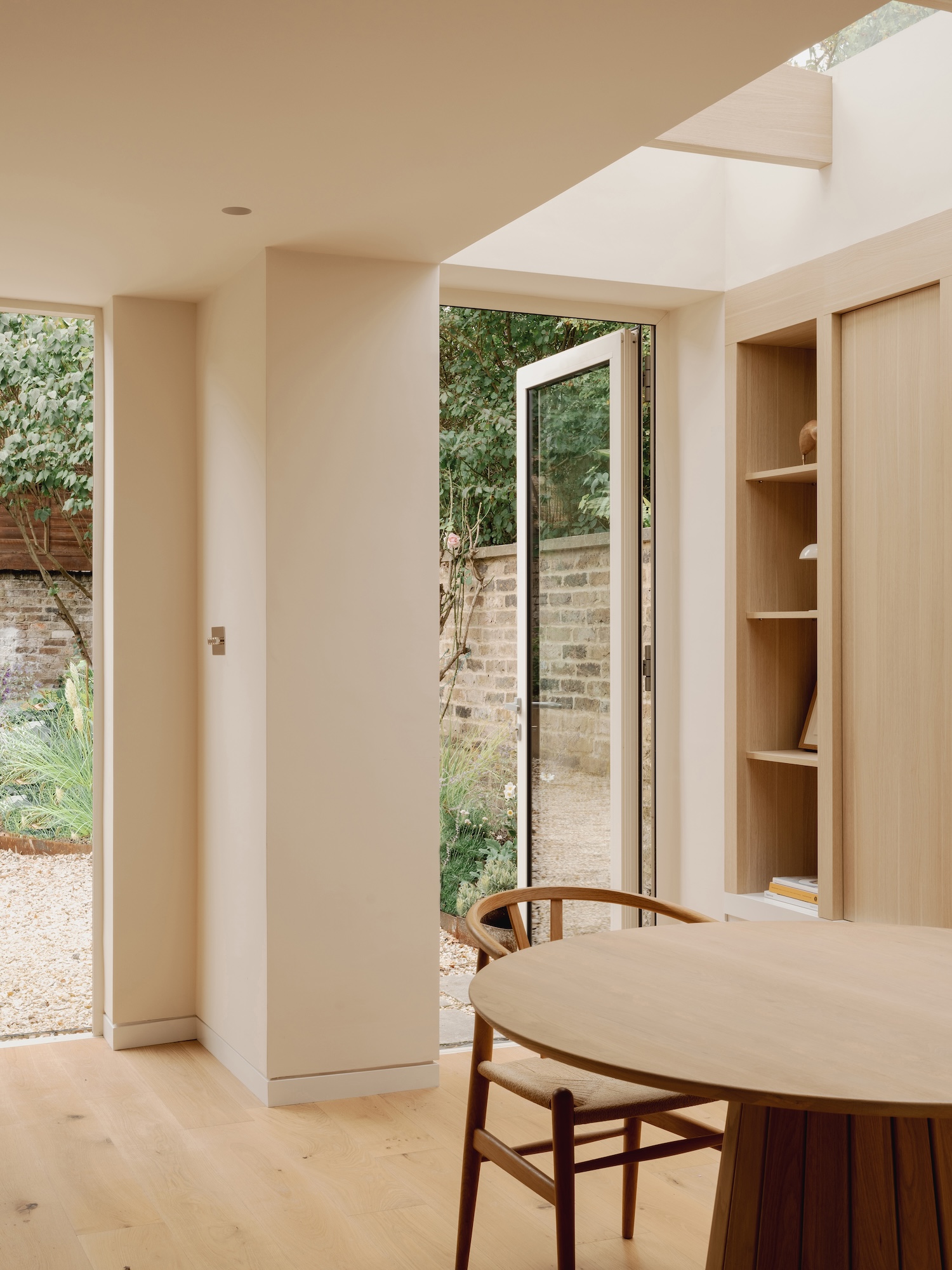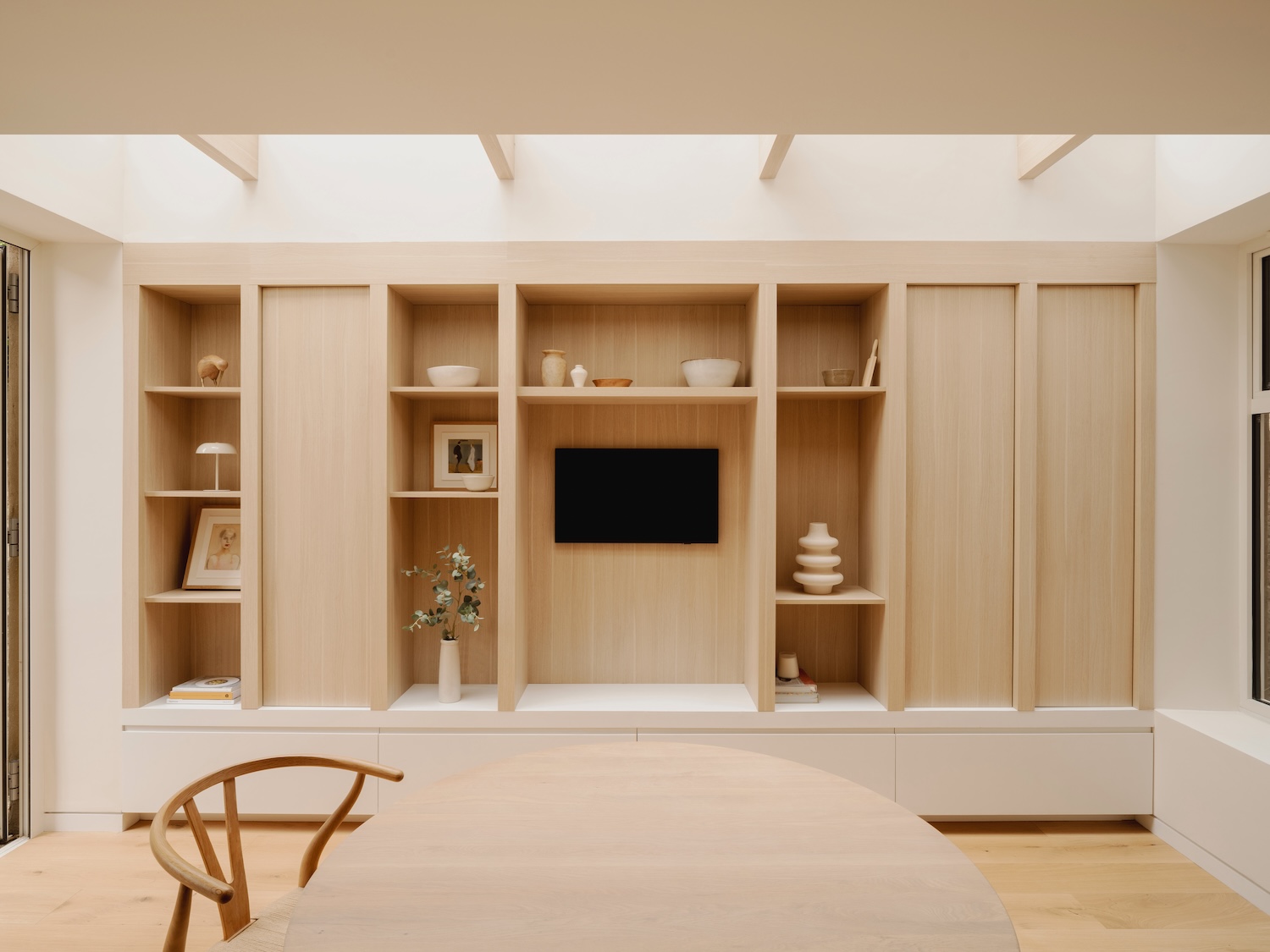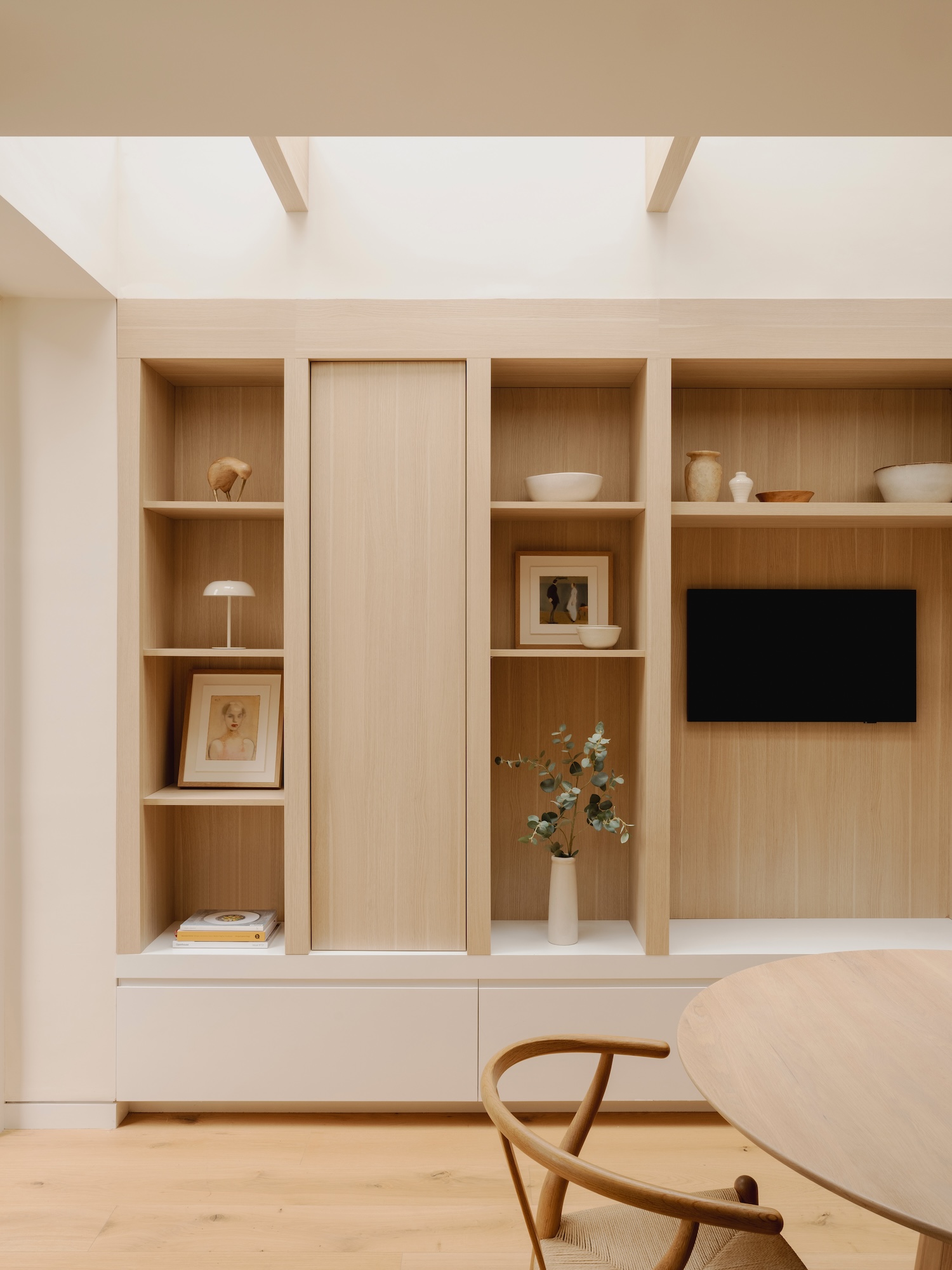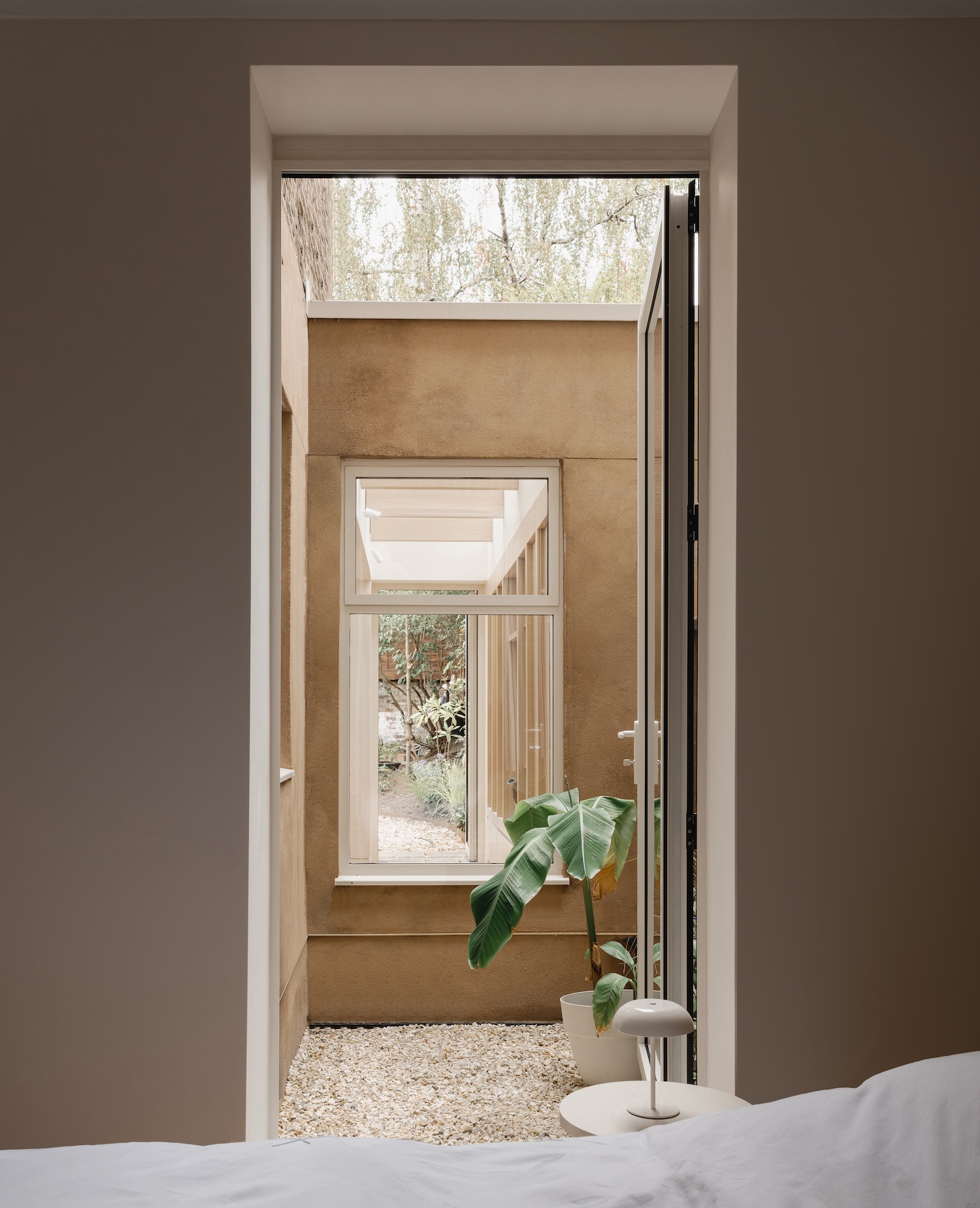Clay House is a minimal home located in London, United Kingdom, designed by Studio 163 Architects. In a quiet corner of Kentish Town, a single pivot door tells the story of transformation. More than just an entrance to a garden, it stands as a metaphor for the entire project by Studio 163 – a deliberate turning point between darkness and light, disconnection and flow. This architectural intervention reveals how thoughtful design can fundamentally reshape not just spaces, but the way we live within them.
The project’s material narrative begins with clay plaster, a choice that speaks to both historical consciousness and forward-thinking sustainability. Like the London stock bricks that have defined the city’s visual language for centuries, the plaster’s warm, natural palette creates a seamless dialogue between old and new. But unlike its Victorian predecessors, this modern application serves a crucial contemporary purpose: enabling the building’s skin to breathe and regulate humidity naturally. This intersection of traditional materials and current environmental concerns exemplifies how contemporary design can honor history while advancing building science.
The architects’ decision to “flip” the traditional layout – bringing living spaces to the rear and bedrooms forward – demonstrates an understanding of modern domestic rhythms. This spatial reordering creates what might be called a gradient of sociability, moving from private to public spaces in a way that feels both logical and liberating. The strategic positioning of two “pod” spaces for the wetroom and WC transforms what could have been merely functional elements into architectural devices that define circulation while maintaining visual connections to the outdoors.
Perhaps the most compelling aspect of the design is its treatment of oak joinery, which serves both practical and poetic purposes. The bespoke storage solutions respond to the perennial challenge of London living – space efficiency – while the material choice extends an invitation to the garden beyond. This thoughtful material continuity dissolves the boundary between interior and exterior, creating what landscape designers often call a “borrowed landscape” effect.




